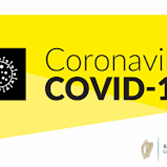Osteoarthritis (OA)
Osteoarthritis affects millions of people around the world. At the end of our bones we have a layer of protective cartilage with the role of provide a cushioning effect. This cartilage gradually wears down over time and in those with OA the cartilage has worn down to the point where it no longer provides that cushioning effect instead they experience more pain in and less movement in their joints, most commonly in the knees, hands, hips and spine.
Although OA is mainly experienced in the aging population it can also effect young people.
OA is not reversible, however it can be managed very well and with early diagnosis and the correct treatment plan many people with OA lead fully functioning, fulfilled everyday lives. Just because you have received a diagnosis of OA doesn’t mean you need to stop your active lifestyle. but can be very well managed. It is key to remain physically active, have a healthy diet and weight.
Causes:
OA often isn’t due to one single cause however there are a number of factors which may make you more at risk of developing OA.
- Age- as you age, your cartilage and joints also age making it more common in those 40 years old or more. Many people walk around without knowing they may have some degree of OA. With most cases of gaining our bone density, muscle bulk reduces, and we may gain some more weight. This in turn adds more pressure and strain to our joints which adds to the development of OA. In some young cases the cause for OA isn’t quite known.
- Gender- OA is more common I women than men, often beginning after menopause.
- Obesity- Those with more body mass will have more weight and pressure going through their bones and joints especially the hips, knees and spine.
- Joint Injury- A previous joint injury can make you more susceptible to developing OA. Those who have a history of excessive activity or exercise particularly at a specific joint may lead to OA in later years.
- Heredity- This can play a small part in an individuals likelihood of developing OA. In particular, nodal arthritis which effects the hands has a tendency to run strongly in families.
Symptoms:
The most common symptom is that of pain in the joint. You may also experience stiffness or Reduced range of movement. Reduced strength around the joint may develop secondary to lack of movement or use. In more severe cases you may hear some ‘cracking’ or ‘creaking’. Some joints may appear swollen further down the line. In more advanced cases everyday tasks and movement may become difficult.
Symptoms often vary, and some weeks may be better or worse than others. Don’t ignore these symptoms, visit your GP as early diagnosis is very important in the management of OA. This diagnosis will help you know at what stage of OA you may be at- mild, moderate or severe. The best way of determining a diagnosis is by means of an X-ray. A subsequent management plan can be made to meet your individual needs
Management:
There are plenty of options you can do to help with your OA.
- Exercise- your physiotherapist will provide you with a simple exercise programme that will have great effects on targeting pain free movement, less stiffness, more strength and better day-today functioning. It is very important you keep up these exercises and also complete more aerobic exercises such as walking , cycling, swimming.
- Medication-pain killers or anti-inflammatories may be prescribed to manage pain and swelling.
- Surgery- In more severe cases your GP and physiotherapist may suggest you as a suitable candidate for a joint replacement surgery. This may either be a full or partial joint replacement
- Lifestyle- its key to ensure you are living a good healthy lifestyle this might mean making some changes to your current lifestyle. You must follow a good healthy diet, hit the exercise guideline of a minimum of 30 minutes of moderate exercise a day and ensure you are getting enough sleep and water. It’s also important to review the things that you may be able to change, reducing your daily smoking and alcohol intake will have a very positive impact on your overall health.




